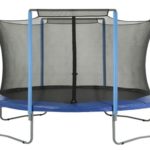How Scientists Come Up With Uses For Things Like HGH

Science is a systematic effort that builds upon itself. It’s the process of organizing knowledge based on testable explanations about the natural world. If you’re on track with your scientific experiments, then you will be able to make predictions about the way things work in the real world. Moreover, any other scientist who follows your experiment should be able to replicate your findings.
Science has become such a specialized field that it is often difficult for non-scientists to understand how science works. One field of science that many people find bewildering is biological science.
Imagine, for the sake of example, that you were a scientist who had observed that athletes who took HGH over a 12 week period tended to be noticeably stronger than a control group who only took a placebo. Additionally, those who took the placebo only did moderately better than those who took nothing at all. As a scientist, you would not be content with this proof that HGH is effective as a supplement, you would want to know why this is the case.
You would need two things to come up with a deeper understanding of HGH: the right setup and the right method.
The Right Setup: The Laboratory
Instead of accepting that HGH makes athletes stronger at face value, you will want to know why this is the case. And the place to find out is the lab. This is the place you would need a place to start your experiments. As a scientist, you will have no way to even begin your work without the right lab. This is where you will do all the microscopic work, like examining blood samples of all the people involved in your experiment. This is where you would do all the drawings and all the tissue sampling. And this is where all the deep discussions with your colleagues would happen.
Without enough microscopes test tubes, slides, beakers, Petri dishes, and Bunsen burners no work is possible. And, of course, the more elaborate the experiment, the more important it is to have the latest high-tech equipment and computers to be as precise about everything as possible. Without a way to examine cellular structures, measure changes, and test out ideas, it’s impossible to be a biological scientist.
Your lab is so important that should you need to be mobile to examine different types of athletes around the country or around the world, then your entire lab would go with you. Lab relocation is sometimes necessary for your experiment to be valid. This is such a delicate task that you’ll probably want to hire a specialized company with a biological storage facility to move everything securely. The ideal scenario would be that when you start work in your new place that you would pick up exactly where you left off at your previous lab, ready to once again visualize cultures and organelles, prepare samples of fluids, mix chemicals, and dissect tissue.
The Right Method: The Scientific Method
So after you have made your observation, you would follow it up with a question. In order to answer that question, you will form a hypothesis, a probable reason why HGH makes athletes stronger. Next, you will make a prediction based on your hypothesis and then proceed to test the prediction. If your hypotheses failed, then you would make new hypotheses, and start all over. In other words, you would iterate until you found the reason why athletes who use HGH get stronger.
You would examine everything about HGH that made your athletes stronger. Moreover, you would examine this question from multiple angles with related questions. Why do athletes notice an increase in energy level? Why does exercise performance improve? How much lean muscle mass do users gain on average? Why do users get stronger bones? Over time, you would develop a comprehensive picture of why athletes who take HGH get stronger. In fact, you would gather so many interesting data points that you will discover years more of research work ahead of you because one clue would lead to another.
In closing, biological science requires two fundamental things: the use of an excellent laboratory to be able to do all your work and the use of the scientific method to keep on drilling down to the reasons for your observations.




